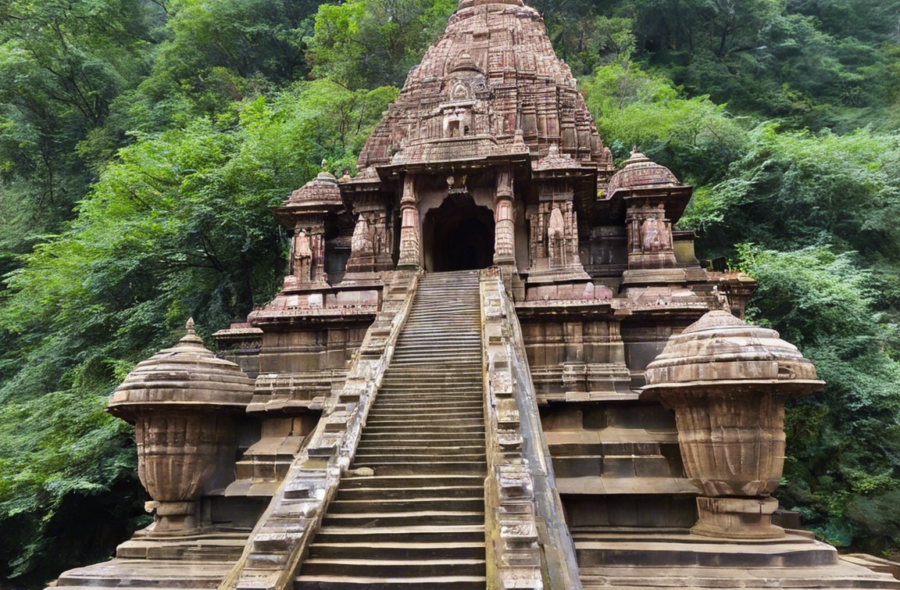India is a land of diverse cultures, religions, and beliefs, with spirituality deeply woven into its tapestry. Among the countless temples that dot the country’s landscape, Bhimashankar Temple holds a special place. Nestled amidst the lush, green Western Ghats of Maharashtra, this ancient temple attracts devotees and tourists alike, seeking solace, blessings, and a connection with the divine.
A Brief History of Bhimashankar Temple
Dedicated to Lord Shiva, the Bhimashankar Temple is believed to have been built in the 18th century. Legend has it that this sacred site was once the abode of a demon named Bhima, who was a staunch devotee of Lord Shiva. Pleased with Bhima’s devotion, Lord Shiva appeared before him and granted him a boon. Bhima asked for immortality, but Lord Shiva, knowing the consequences of such a request, granted him the boon of being invincible in battles fought with good intentions.
Architectural Beauty and Significance
The temple’s architecture is a fine example of ancient Indian craftsmanship, with intricate carvings and sculptures adorning its walls and pillars. The main sanctum sanctorum houses the Shiva Linga, the symbolic representation of Lord Shiva, where devotees offer prayers and seek blessings. The temple complex also includes smaller shrines dedicated to various deities, adding to the spiritual aura of the place.
The Spiritual Significance of Bhimashankar Temple
For devout Hindus, a visit to Bhimashankar Temple is considered highly auspicious. It is believed that worshipping at this sacred site can bring peace, prosperity, and fulfillment of wishes. The rhythmic chants of mantras, the fragrance of incense, and the sight of devotees deep in prayer create a serene atmosphere that envelops visitors in a sense of tranquility and devotion.
Journey to Bhimashankar: A Pilgrimage and Beyond
Reaching Bhimashankar Temple is not just a physical journey but also a spiritual one. The route to the temple passes through dense forests, gurgling streams, and scenic vistas, offering a perfect opportunity for introspection and contemplation. Many devotees choose to undertake a pilgrimage on foot, trekking through the rugged terrain as a form of penance and devotion.
Festivals and Celebrations at Bhimashankar Temple
The temple comes alive during festivals like Mahashivaratri, Kartik Poornima, and Shravan Maas, when devotees from far and wide gather to participate in elaborate rituals and ceremonies. The air resonates with the sound of bells, hymns, and devotional songs, creating a festive ambiance that is both joyous and spiritually uplifting.
Tourist Attractions Near Bhimashankar Temple
Apart from its spiritual significance, Bhimashankar also offers opportunities for nature lovers and adventure seekers. The Bhimashankar Wildlife Sanctuary, home to a variety of flora and fauna, is a must-visit for those interested in eco-tourism and wildlife conservation. Trekking trails, waterfalls, and viewpoints in the vicinity provide ample scope for exploration and adventure.
Practical Information for Visitors
If you are planning a visit to Bhimashankar Temple, here are some practical tips to keep in mind:
- Location: Bhimashankar Temple is located in Pune district of Maharashtra, approximately 220 km from Mumbai.
- Best Time to Visit: The ideal time to visit is during the winter months (October to February) when the weather is pleasant.
- Accommodation: There are guesthouses and lodges available for pilgrims and tourists in the temple vicinity.
- Dress Code: Visitors are advised to dress modestly and remove footwear before entering the temple premises.
- Local Cuisine: Don’t miss out on trying the local Maharashtrian cuisine, which is known for its flavor and spices.
Frequently Asked Questions (FAQs)
- Is photography allowed inside the temple premises?
-
Photography is generally not allowed inside the main sanctum sanctorum but is permitted in other areas of the temple complex.
-
Are there any restrictions on who can visit the temple?
-
The temple is open to people of all faiths and backgrounds. However, visitors are expected to respect the religious sentiments and practices observed at the temple.
-
Can women visit the temple during their menstrual cycle?
-
As per traditional Hindu beliefs, women are advised not to visit temples during menstruation. However, this is subject to individual beliefs and practices.
-
Are there any accommodation options near Bhimashankar Temple?
-
Yes, there are guesthouses, lodges, and hotels available in the vicinity of the temple to accommodate pilgrims and tourists.
-
What are the modes of transportation to reach Bhimashankar Temple?
-
Visitors can reach the temple by road from major cities like Mumbai and Pune. Private taxis, buses, and shared jeeps are available for the journey.
-
Is there a dress code to be followed while visiting the temple?
-
It is advisable to dress modestly and respectfully while visiting the temple. Sleeveless tops, shorts, and revealing clothing are best avoided.
-
What are some nearby attractions that can be visited along with Bhimashankar Temple?
-
The Bhimashankar Wildlife Sanctuary, Gupt Bhimashankar (cave temple), and Hanuman Lake are some of the nearby attractions worth exploring.
-
Are there any guided tours available for visitors at Bhimashankar Temple?
-
Yes, local guides and tour operators offer guided tours of the temple complex, providing insights into its history, architecture, and spiritual significance.
-
What are the peak pilgrimage seasons at Bhimashankar Temple?
-
The festival of Mahashivaratri and the holy month of Shravan (July-August) witness a significant influx of pilgrims at Bhimashankar Temple.
-
Can I carry personal belongings inside the temple?
- While carrying personal belongings like bags and mobile phones is allowed, visitors are advised to be mindful of their surroundings and not disturb the sanctity of the temple.
In conclusion, a visit to Bhimashankar Temple is not just a journey for the body but a soulful experience that leaves an indelible mark on the heart and mind. Whether you seek spiritual solace, cultural enrichment, or natural beauty, this sacred abode of Lord Shiva beckons you to embark on a meaningful pilgrimage of self-discovery and devotion.

